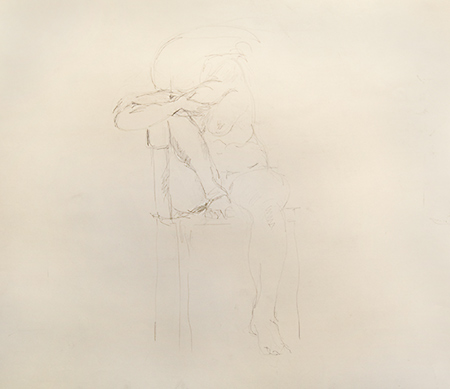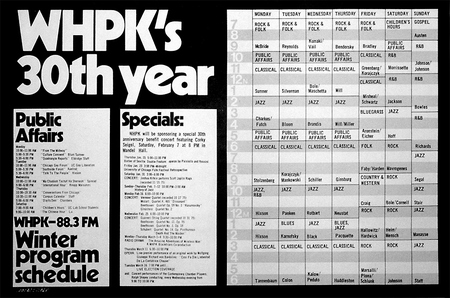
Category: General
Rounding Error

1977: Color Transfer
I found a cache of my ancient artwork from the 1970s, when I was an art student. I’ve been scanning and posting a few of them. I thought this was an interesting piece of collage, it’s a “color transfer” Solvent is applied to magazine photos, the photo is placed against the paper, and the back of the photo is burnished to transfer the image. I think in this one, the solvent was acrylic medium. It has a beautiful texture and the colors are fairly strong. Color transfers tend to have weak, transparent colors, it’s hard to transfer much of the ink.
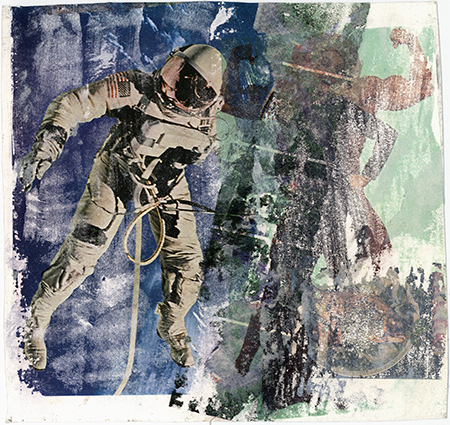
I found several of these prints, but this is the only one small enough to fit on my scanner, it’s about 8 inches square. I might post the other images later if I can get a good reproduction. These seem to be hard to capture.
I remember fiddling with color transfer a bit, sometime around ’77. This is what we used to do when we didn’t have photoshop. It is kind of like monoprinting, but you just have magazine photos as your source. You can manipulate the texture and depth of the transfer, but it’s pretty random. I guess we thought we were all Rauschenbergs, he used color transfer, but he had a professional printmaking atelier to do them properly. This color transfer process was popular around the printmaking department at the U of Iowa, it was so cheap and easy that a lot of students worked with it. But now it’s pretty much a lost art.
1976: Life Drawing 202
1974: My First Gig
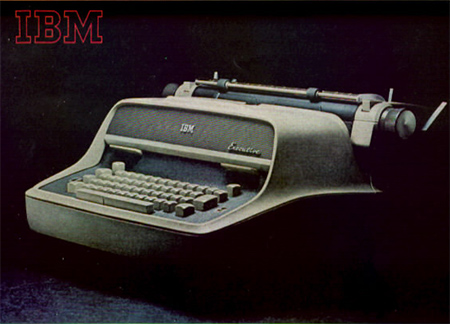
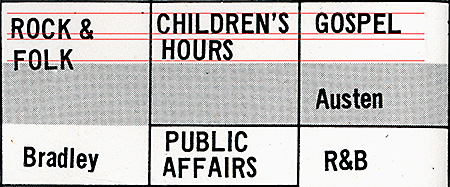
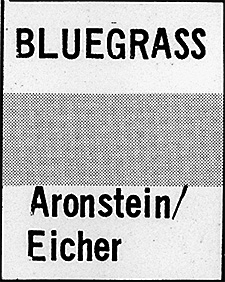
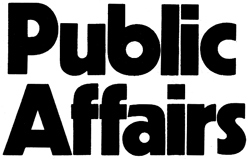
![]() The core idea of this poster was a chronological layout, using gray stripes to guide the eye across the grid. Today this design is known as “zebra stripes,” it’s very common, it is even used on computer screens to display long file lists. I got the idea from “green bar” computer paper, it had green zebra stripes to guide your eyes across 14 inch wide paper.
The core idea of this poster was a chronological layout, using gray stripes to guide the eye across the grid. Today this design is known as “zebra stripes,” it’s very common, it is even used on computer screens to display long file lists. I got the idea from “green bar” computer paper, it had green zebra stripes to guide your eyes across 14 inch wide paper.
stiff poster paper for this job.
Blizzard 2/1/2011
Iowa City had a severe blizzard last night, at least 15 inches of snow and 40 mph winds. The National Guard has been mobilized to handle a snow emergency. I always get stuck in my parking lot when it snows like this, and it can take a couple of days for the plow to dig us out. When the storm was over, this is what I saw.
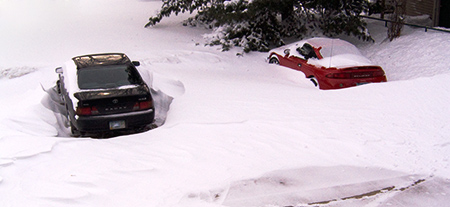
The wind was at just the right angle to blow the snowdrifts away from my car. Everyone else is buried 4 feet deep.
Update: The plow finally dug us out on Feb 4, three days after the blizzard.
1975: 3M VQC Copier Art
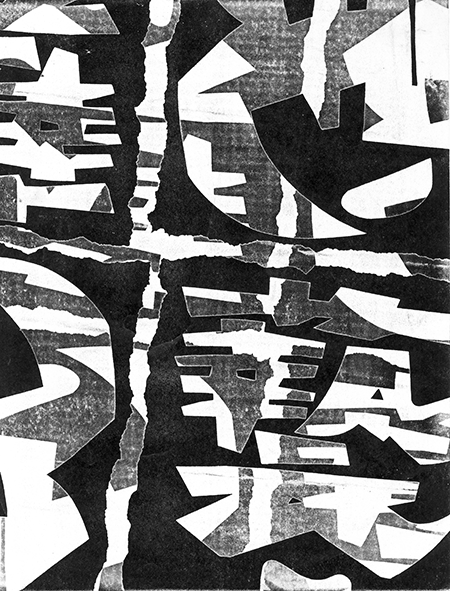
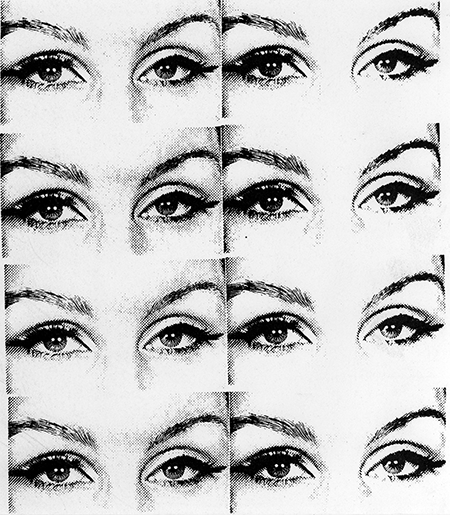
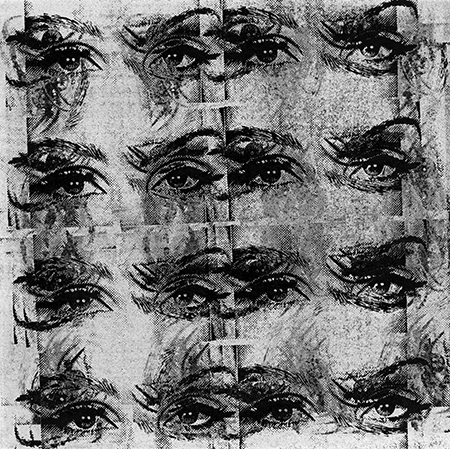
1976: Life Drawing 101
I was going through some folios of old artwork and found this little sketch from my oldest Life Drawing classes. This must date to around 1976. I was a total rookie at drawing, this is kind of embarrassing, but I can see some good qualities here. This sort of artwork would be considered “juvenilia,” work done as a young artist who hadn’t quite figured out what he’s doing.
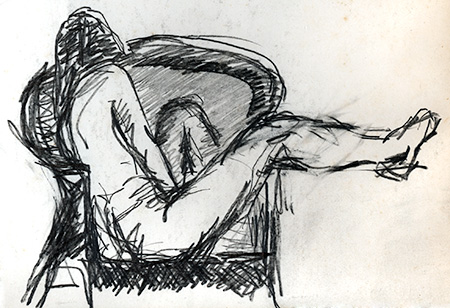
Now obviously I’m struggling here with the proportions of the leg, there are some erasures and I probably had it better before I erased it. The leg and torso are presented flat in the picture plane, so I did have some sort of idea of what I was trying to do with this drawing. The left leg also has problems, but it is shaded in a way that pushes it back from the picture plane. You can see it took me a couple of tries to get the round shape of the wicker chair, but it’s shaded rather nicely. There are two or three different pencil hardnesses in use here.
But I am rather more pleased with the torso and shoulder, the proportions are right and it forms the front plane with the leg. It’s hard to indicate the roundness of forms when you draw in these sketchy strokes, executed so rapidly. But the sketchy strokes work well when just suggesting the shape of a shoulder blade, the shadow under the upper arm, or the shape of the hips and buttocks. The round curves in the back of the chair pull the picture inward, while the square front of the chair helps establish the front plane of the model.
The problem with this sort of life drawing is that the poses are only a few minutes, so you don’t have time to work everything out. The classes are designed to help you work out your issues with proportion and lighting, but you can only work on a couple of things in a single drawing. It’s almost impossible to get it all right.
This drawing is about six inches across, in the corner of a large 18 x 24 inch sheet of paper. The full page is taken up by an unfinished sketch in large, rough, black chalk, working out the composition. It is obviously abandoned but has the same composition as the sketch. I can tell I did a quick chalk sketch but didn’t like it, and didn’t want to waste the whole sheet of paper, so I did this little sketch in the corner.
I am not an artist with natural draftsmanship skills, it’s hard work developing those skills. I still have poor draftsmanship, which is pathetic because I have a BFA degree in Drawing and Painting. Obviously being unable to draw well is not an obstacle to an art degree in Drawing. I recently did some Life Drawing studio sessions and I can tell I still struggle with the same problems of body proportion and how to convincingly portray it. Now I have other qualities that help my drawing rise above the level of just another poor draftsman, and I can see some faint impressions of my current drawing methods in this old drawing. That’s why artists sometimes keep juvenilia, to compare it to their current work, and see where they came from.
Body Temperature
Last winter, I caught the Swine Flu, I was sick for a whole month. I went to the doctor, they took my temperature, it was 96.5F. I didn’t know your body temp could drop like that, I asked the doctor about it, he said, “it’s within a normal range.” Ever since then, my average normal body temperature has been 96.5F.
This winter, I caught a terrible cold, I’ve been sick for over a month. I went to the doctor, my body temperature was recorded at 93.5F! I thought any body temp that low meant the time of death was within the last 4 hours. At one point, I had a terrible fever, my temp shot up to 97.5, I felt like I had a fever of 104. But I must be getting better, my temp has stabilized back to 96.5.
Next winter, I hope I don’t get a cold like this. I don’t know how much lower my body temperature can get. I’m already at the edge of hypothermia.
Sox 3, Charles 0
I have a problem with socks. I have a problem with women and socks. I remember once I was doing the laundry and I found a lost sock. It was a little women’s footie, I thought maybe my girlfriend left it behind, it was the kind of socks she wore when working out.
So the next time she came over, I gave her the sock. She looked at it and was immediately enraged. She said, “This isn’t my sock. It must be your other girlfriend’s sock,” and she stormed out the front door. I was stunned, I had plenty enough problems with this one girlfriend, I sure didn’t have (or need) another one. But she was convinced another woman left it at my house, and she wouldn’t speak to me for a whole month. The sock’s original owner is unknown. I can only guess that it was left behind in a dryer in the laundromat, then I threw my laundry in that dryer.
That was years ago, but I’ve had some recent sock problems too. A woman friend came over last winter on a cold, wet day. She asked if I had any dry socks. I gave her one of my best pairs of socks. I had two identical pairs of my warmest socks, big thick black woolen winter socks, I wore one pair and she wore the other. She wore them home and I never got them back.
Now the other pair of black woolly socks is gone too, thieved by another woman. Another friend came over and threw her jacket down on the floor by my shoes and socks. For reasons I will never figure out, she took my socks when she picked up her jacket and left. I asked her about it, she said, “oops, I just swept up my jacket and stuff and I guess I grabbed your socks too.” I demanded the return of my favorite socks. She said it was too late, she was doing laundry for someone else and gave my socks to them. No getting them back. Now I have no good winter socks at all. And someone else is now wondering where the hell this pair of rogue socks came from.
Update: Sox 3, Charles 1. I found a third pair of my favorite black socks. So now I have the one pair left.
